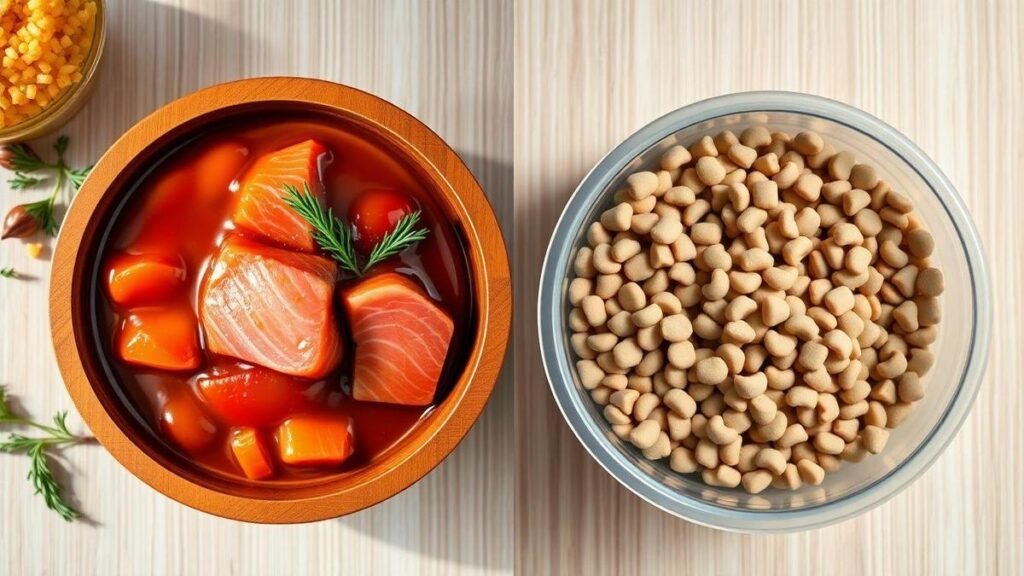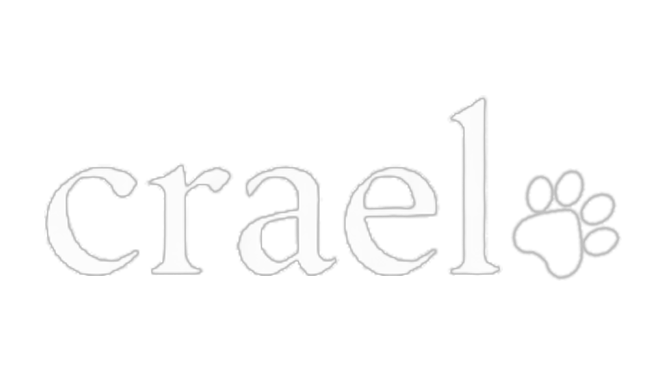My clear comparison — Comparação entre rações premium e convencionais para gatos
I know choosing food feels confusing and I want to help. I walk you through protein levels and amino acids, vitamins and minerals, and what each life stage truly needs. I check ingredient quality and named meats versus by-products. I explain fillers, additives, and preservatives, show how to read labels and ingredient order, and weigh cost versus value with a simple cost-per-serving tip. I compare short-term signs (coat, energy, digestion) and long-term health effects, share what vets and research report, and explain how I choose for kittens, adults, and seniors so you can feel confident.
Key takeaway
- Premium food generally uses higher-quality ingredients and clearer protein sources.
- My cats digest premium food more easily and often show better coat and energy.
- Conventional food usually costs less but can contain more fillers.
- Over years, lower-quality diets may increase risk for digestive or urinary issues.
- I prefer premium for kittens, seniors, or cats with special needs.
(Comparação entre rações premium e convencionais para gatos) — use this comparison as a checklist when shopping.
Protein levels and amino acids: premium vs conventional
I read labels and look for protein sources first. Premium formulas usually list named meats (chicken, salmon) as top ingredients. Conventional brands often list grains or by-products first — a clue about where most calories come from.
Cats need specific amino acids, especially taurine. Premium foods often specify taurine and other amino acids; conventional foods meet minimums but are less transparent. After switching to a named-meat formula with added taurine, I noticed more energy and a shinier coat in my cat.
| Aspect | Premium cat food | Conventional cat food |
|---|---|---|
| First ingredient | Named meat or meat meal | Grain or meat by-products |
| Protein level | Generally higher and more digestible | Often lower, more carb-based |
| Amino acids | Taurine and amino acids listed/formulated | Basic levels to meet minimums |
| Digestibility | Higher (better absorption) | Lower (more waste) |
Vitamins, minerals and life-stage needs
Think about age: kittens, adults, and seniors need different balances. Premium labels often show formulas for kitten, adult, or senior; conventional bags sometimes claim all life stages.
I watch for vitamins (A, D, E), minerals (calcium, phosphorus), and omega-3 fatty acids (EPA/DHA). Premium foods tend to list these clearly and may add targeted supplements. Consistent nutrient levels matter for bones, skin, and heart health.
| Nutrient | Why it matters | Premium | Conventional |
|---|---|---|---|
| Taurine | Heart & eye health | Clearly added | Often present but less transparent |
| Calcium / Phosphorus | Bone & teeth balance | Balanced by life stage | May be generic |
| Vitamins A, D, E | Immune & vision | Specified amounts | Basic coverage |
| Omega-3 (EPA/DHA) | Skin, coat, brain | Often included | May be low or absent |
Simple comparison tips:
- Check the first five ingredients — they matter most.
- Prefer named meats or meat meal over vague terms.
- Look for taurine on the label — it’s essential.
- Choose a clear life-stage formula when possible.
- Note preservatives: natural (vitamin E/C) vs synthetic.
- Price isn’t everything, but very cheap food often uses more fillers.
Ingredient quality: named meats vs by-products
I prioritize animal-based proteins and want named meats (chicken, salmon) high on the list. Vague terms like meat or poultry reduce transparency. Some by-products are nutrient-rich (organs); others are low-value. Brand transparency helps tell the difference.
| Feature | Premium | Conventional |
|---|---|---|
| Primary protein listed | Named meat | Generic meat or mixed sources |
| Meat meal use | Specified (e.g., chicken meal) | May use unnamed meat meals |
| By-product clarity | Lists organs or avoids by-products | Uses by-products without detail |
| Protein % & digestibility | Higher and more digestible | Often lower, mixed digestibility |
I once switched from a vague-meat diet to a named-meat formula and my cat’s stools firmed up quickly.
Fillers, additives and preservatives
I scan for common fillers (corn, wheat, soy). Premium foods usually use fewer fillers and opt for whole-food carbs like sweet potato or peas.
I prefer natural preservatives (mixed tocopherols — vitamin E) over synthetic ones (BHA/BHT, ethoxyquin). Some additives are harmless; others can trigger allergies.
| Item | Premium | Conventional |
|---|---|---|
| Common fillers | Fewer; whole-food carbs | More corn, wheat, soy |
| Flavor additives | Natural flavors, limited use | More artificial flavors |
| Preservatives | Natural (tocopherols) often | Synthetic more common |
I once bought a cheap bag heavy on fillers; my cat lost interest. That taught me fillers matter for both health and taste. Also consider practical setup and cleanliness of feeding areas to keep food fresh and reduce spoilage — a clean station matters; see best practices for keeping your pet’s food and water area safe and sanitary (how to keep your pet’s food and water area clean and safe).
How to read labels and ingredient order
Read the ingredient list top to bottom. The first five ingredients matter most. If a named meat appears first, that’s a good sign; if plant starches or unnamed meats are first, be skeptical.
Quick checklist I use:
- Named meat as first ingredient?
- Meat meal named (e.g., chicken meal)?
- First five items free of cheap fillers like corn/wheat?
- Preservatives listed (look for tocopherols)?
- Check guaranteed analysis for crude protein and moisture.
Examples:
- “Chicken, chicken meal, peas, rice, chicken fat” — meat-forward, acceptable.
- “Meat and bone meal, corn, wheat, animal digest” — low transparency, less desirable.
Always consult your vet for special needs; labels tell a lot, but your cat’s reaction tells the rest. For general care and nutritional context, this guide to caring for pets is a helpful companion.
Cost: upfront price vs cost-per-serving
I break choices into two parts: upfront price and cost per serving. Check bag price and weight, then ask how many meals you’ll get. Denser, premium food can mean smaller portions and a similar or lower cost per serving.
Simple method:
- Note bag weight (g) and price.
- Pick serving size (g).
- Servings = Weight ÷ Serving.
- Cost per serving = Price ÷ Servings.
- Multiply cost per serving by daily feedings and 30 to get monthly cost.
(Comparação entre rações premium e convencionais para gatos) helps frame the decision — don’t just compare bag prices.
When I switched to a denser premium kibble, my cat ate less per meal and I spent less monthly despite the higher bag price. In multi-pet homes, consider a dedicated feeding station to manage portions and reduce waste — a well-designed setup prevents food stealing and overfeeding (design an indoor feeding station for multi-pet homes) and can be simplified for stress-free use (stress-free multi-cat feeding station).
Are premium foods worth it long-term?
Premium can be worth it, but not always.
From experience:
- Health signals matter: better coat and firmer stools mean less waste and fewer cleanup moments.
- Portion control: denser foods can reduce monthly costs.
- Waste factors: leftovers, spoilage, and pickiness can negate quality benefits.
If a cat refuses a premium flavor, the bag becomes waste — so consider palatability, portion size, and your cat’s reaction before accepting higher long-term costs. If you’re introducing a new food or new pet, use gradual transitions and management strategies to reduce stress and waste; there are specific tips for helping newly adopted cats adjust indoors (supporting a recently adopted rescue cat indoors).
Short-term signs to watch: coat, energy, digestion
After a diet change watch:
- Coat: shinier, softer coat suggests better fats and protein.
- Energy: steady activity indicates appropriate energy balance.
- Digestion: firm stools and fewer GI upsets show good tolerance.
| Sign | With premium | With conventional |
|---|---|---|
| Coat | Improved shine within weeks | May remain dull or improve slowly |
| Energy | More steady activity | Fluctuating energy |
| Digestion | Firmer stools, fewer upsets | More loose stools or hairball issues |
Long-term effects on obesity, urinary health, and organ stress
Over years, diet affects weight, urinary health, and metabolic stress.
- Weight: higher-quality diets and protein can help keep cats leaner.
- Urinary health: mineral balance affects stones and urinary issues.
- Organ stress: long-term nutrient balance matters for heart, liver, kidneys — good sourcing and ratios can reduce chronic stress.
| Area | Possible outcome with premium | Possible outcome with conventional |
|---|---|---|
| Obesity risk | Lower if portioned & higher protein | Higher if high in fillers & calories |
| Urinary disease | Lower with controlled minerals | Higher if minerals imbalanced |
| Chronic organ stress | May be reduced with balanced nutrients | May increase if diet is imbalanced |
Research shows associations between diet quality and better body condition, but strong long-term trials are limited. Vets recommend choosing food based on a cat’s age, health, and taste, and monitoring results.
When vets recommend premium — and when conventional or prescription is right
Vets often recommend premium diets for cats with digestive issues, allergies, weight problems, or higher nutritional needs. Prescription diets are used for specific medical conditions (kidney disease, urinary crystals, diabetes, severe food allergies) and require follow-up.
Why a vet may recommend premium:
- Digestive sensitivity: higher digestibility and fewer fillers.
- Food allergies: limited ingredients or novel proteins.
- Weight control: controlled calories and higher protein.
- Life-stage needs: specific formulas for kittens, seniors, pregnant cats.
Conventional food can be balanced and cost-friendly for healthy, active cats. Prescription diets are medicine and should be used under veterinary supervision.
Questions to ask your vet before switching:
- What is the medical reason for this change?
- How long should my cat stay on this diet?
- Are there risks if I switch back later?
- What benefits should I expect and when?
- Do you recommend a transition plan?
- Is this diet prescription and how will we monitor results?
- Are there cost-effective alternatives that meet my cat’s needs?
If you’re preparing your home for a new pet or introducing foods while adding a new cat or dog, follow preparation and introduction steps to reduce stress and avoid feeding conflicts (prepare your home for a new dog or cat, introduce a new pet to your home and other pets).
Choosing for kittens, adults, and seniors
When I search “Comparação entre rações premium e convencionais para gatos” I focus on what the food delivers for each life stage.
Kittens:
- Need more calories, higher protein, and DHA for brain/vision.
- Premium kitten formulas often provide higher calories, animal-based proteins, and DHA. If budget is tight, mixing a premium kibble with a conventional option and monitoring weight/energy works.
Adults:
- Need to maintain weight and muscle. Premium helps if your cat is picky or very active; conventional may be OK if the cat is healthy.
Seniors:
- Need easier-to-chew food, joint support (e.g., glucosamine), and often higher digestibility. Premium options help when signs of arthritis, weight loss, or dental wear appear.
Match life-stage labels to your cat and watch weight, coat, energy, and stool — those tell you more than a label alone. If you’re settling a cat into a new apartment or helping them adjust to a different routine, consider guides on helping a cat adapt to a new environment (help your cat adjust to a new apartment) and how to maintain a calm indoor life (help pets feel safe and confident indoors).
Conclusion
I boiled this down so you can cut through the noise: premium foods tend to offer clearer named meats, higher protein, and added taurine, while conventional options are usually cheaper but often contain more fillers. I’ve seen the difference in my own pets — it shows in the bowl and on the couch.
Watch quick signals (coat, energy, digestion), do the simple math on cost-per-serving, check the life-stage label, and talk to your vet when needed. Premium isn’t a silver bullet, but it’s often worth the price for kittens, seniors, or cats with special needs. And don’t forget palatability — a pricey bag is useless if your cat won’t eat it.
Use this practical comparison — Comparação entre rações premium e convencionais para gatos — as a guide: weigh ingredient quality, nutrient transparency, cost-per-serving, and your cat’s response.
For more practical guides and tips, visit https://blogcraelo.com.
Frequently asked questions
Q: How do I spot the real difference between premium and conventional cat food?
A: Read labels. Check protein sources and whether a named meat appears first. Look for fewer fillers and verify taurine and life-stage information. Trust your cat’s response more than advertising.
Q: Is it worth paying more for premium food compared to conventional brands?
A: Weigh cost vs results. Premium often improves coat, energy, and reduces waste; use cost-per-serving to compare fairly. (Comparação entre rações premium e convencionais para gatos) is a useful framework.
Q: Will switching to premium food make my cat healthier right away?
A: Expect gradual improvements — changes often appear in weeks, not days. Watch appetite, stool, and coat.
Q: How do I switch my cat from conventional to premium safely?
A: Mix small amounts over 7–10 days, increasing new food gradually. Slow transitions reduce upset; pause and slow further if you see digestive issues. For structured transitions and routine changes, see tips on transitioning pets to a new daily schedule (how to transition pets to a new daily schedule).
Q: Are ingredients the main reason premium costs more than conventional food?
A: Yes — higher-quality proteins, fewer fillers, and added vitamins/supplements typically raise cost.
Comparação entre rações premium e convencionais para gatos — use this comparison to make informed, practical choices that fit your cat’s health and your budget.






